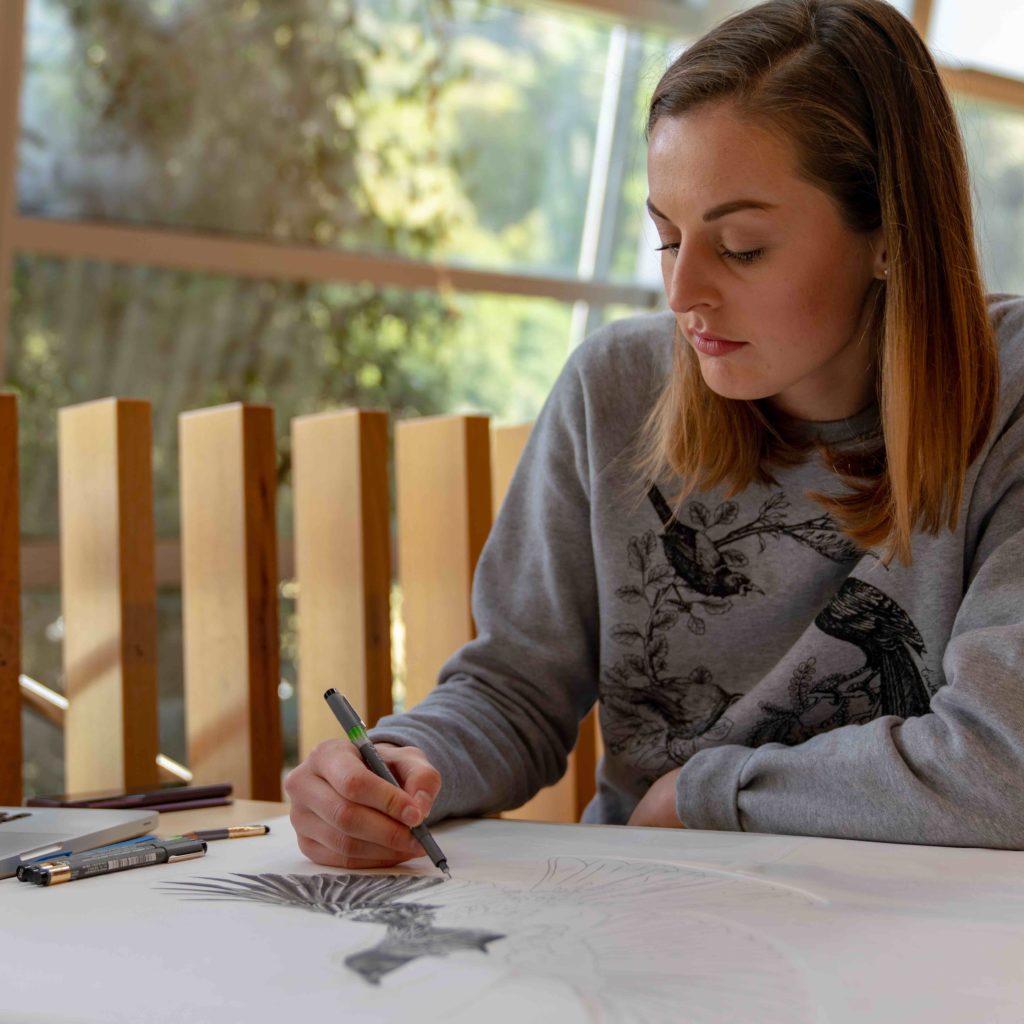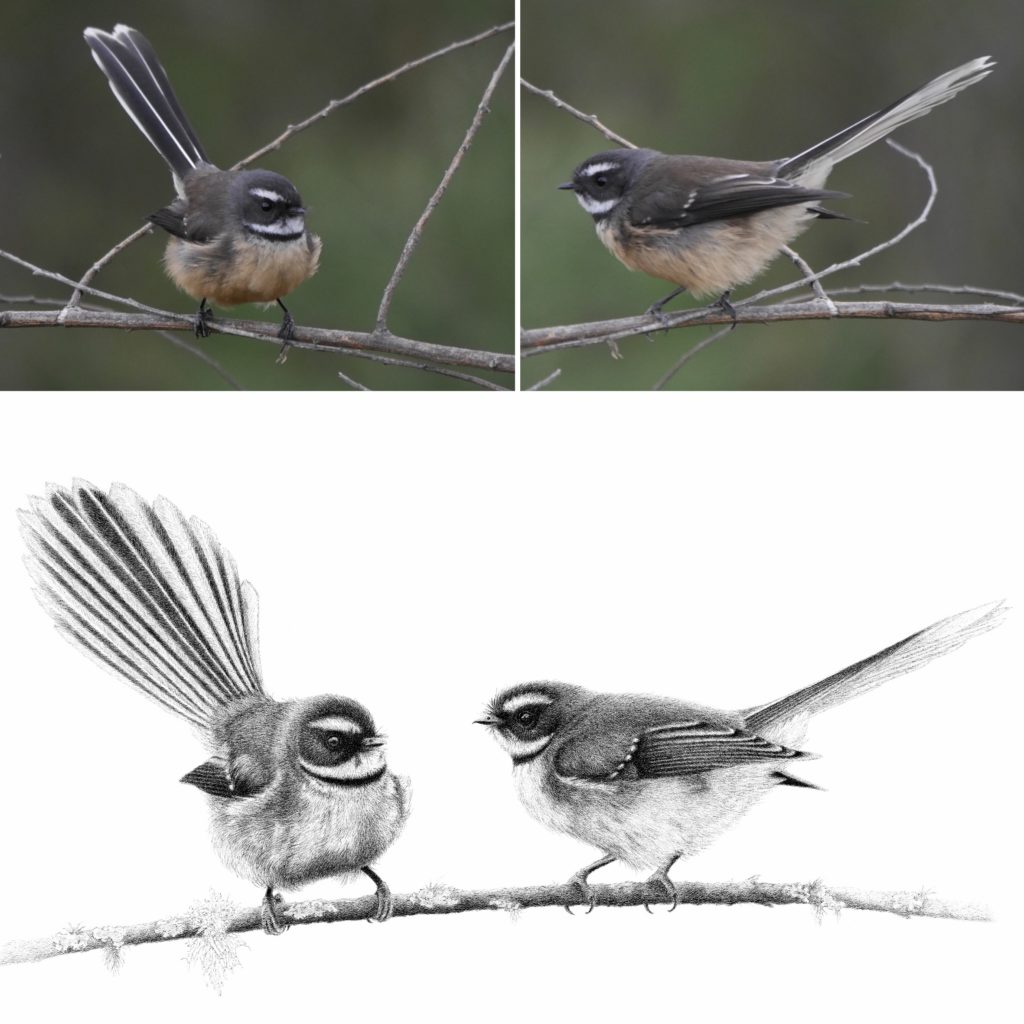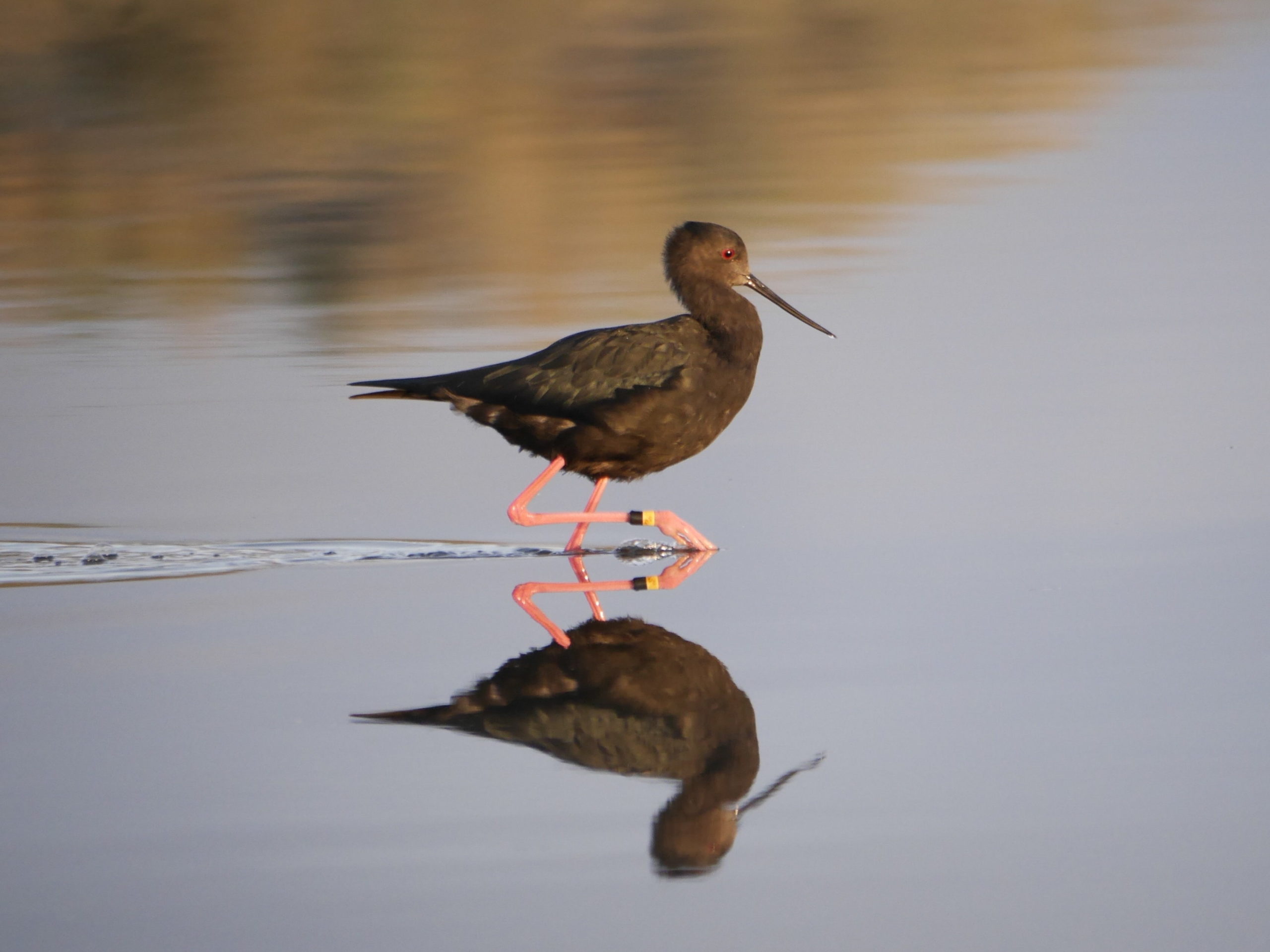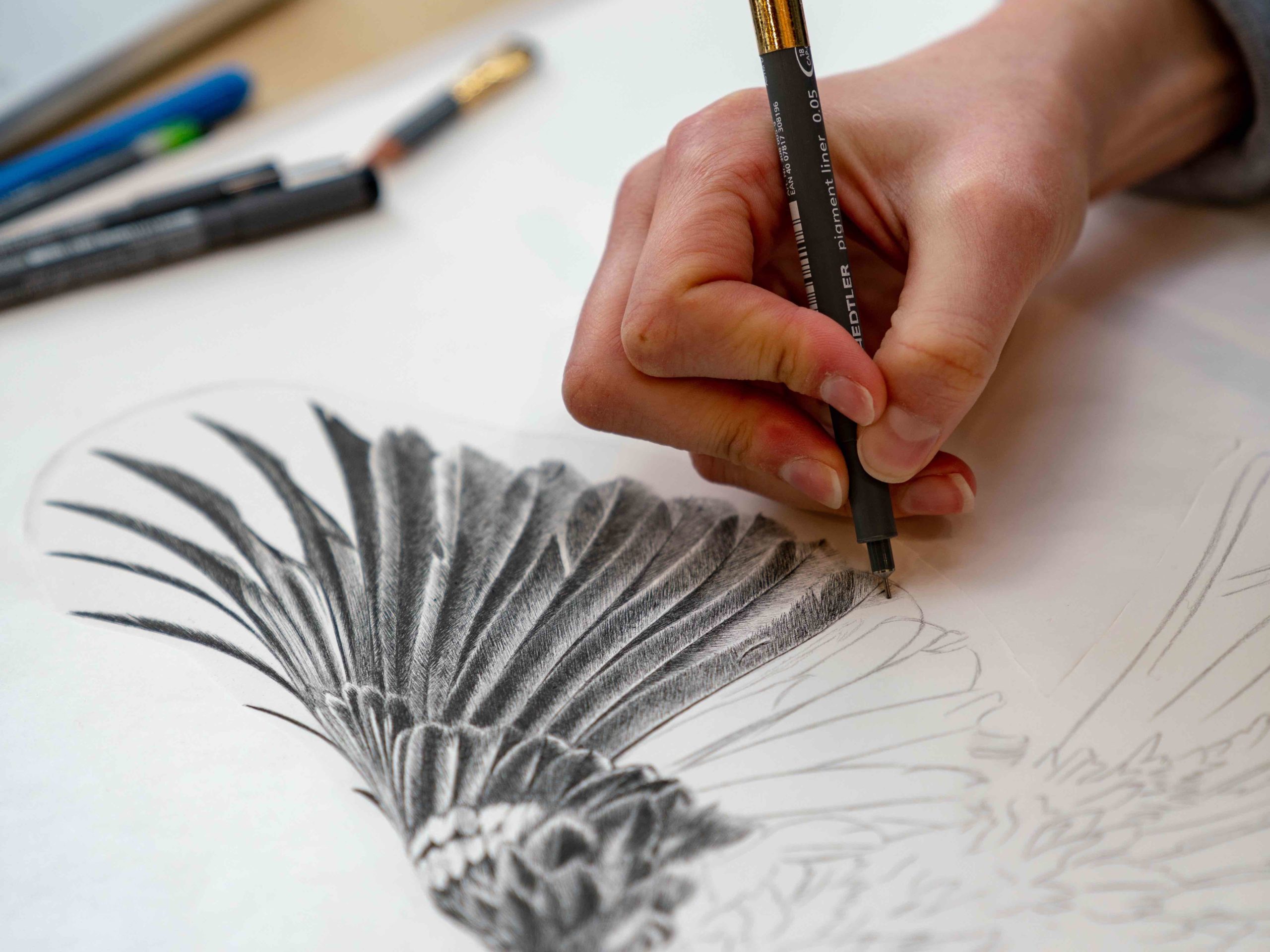When Hannah Shand studied fashion at University, she would choose to do art-based projects and always enjoyed doing things by hand rather than on computer. As a graduate, she moved to Auckland for a job in a fashion workroom, and found the workroom job wasn’t as creative as studying at Uni.

“I wanted to do something creative, but had to find time for that,” she says.
She began drawing on her lunch breaks, in the evenings and on the weekends as a creative outlet. After exploring the sights around Auckland and seeing some of our native birds she began using these as a subject in her art.
“I enjoy trying to show a bird or animal’s emotion in some way – to capture their personality.”
Later, she moved to Wellington and was practising even more. “I travelled an hour each way on the train to work every day, so I would draw birds and animals while I was on the train, as well as doing larger artworks from home.”
Art, not fashion was where her passion and creativity really lay, so in late 2017, Hannah took the plunge to become a full-time artist, swapping the 9-5 and long commutes for life on the Kāpiti Coast.
“When I first decided to go full-time, I also decided that I wanted to do more than just create art,” she says. “One of my goals was to help the birds that I was drawing, and spread awareness about the threats they face and learn about how we can help. I wanted to have some kind of positive impact, however big or small.”
“Forest and Bird’s online shop had just opened, so I contacted them to sell my art through the shop, with a percentage used for conservation. Nowadays I work with multiple different conservation groups and bird sanctuaries, like Zealandia and Sanctuary Mountain, where a portion of the money from sales goes to conservation.”

Further from this, Hannah has also used her art to fundraise for organisations such as Ngā Uruora, a community-based conservation project in Kāpiti and ‘Wingspan’, the National Bird of Prey Centre in Rotorua.
Hannah usually begins her finely detailed drawings with a reference photograph or multiple photographs, to create a composition for the artwork.
“I used to draw from friends’ photos and Instagram photos. I would ask photographers on Instagram if I could draw their photo”, Hannah says. “Then last year I was lucky enough to borrow a camera from a friend who does bird photography and I started taking my own photos.”
Hannah was soon hooked.
“I didn’t realise how much I would enjoy photography!” she says. “I have found another thing that I love to do! I started taking photos at Zealandia, a predator free sanctuary in Wellington that has an incredible variety of birds. A lot of my friends are photographers and have given me guidance, which I’m very appreciative of.”
Research also became an important part of the process.
“I started researching where to find different birds, and have done trips to find specific birds. I went on a trip down south with Melissa Boardman (a fellow bird artist), who had always wanted to see kaki (black stilt) in the wild. We went to several predator free islands, and also made a special trip to Waikuku beach to photograph this very rare bird. They are nationally critical and with a population of only about 130 wild adult birds; it was a really special moment for us to share. It’s these special interactions with our wildlife that I want to talk about and use to inspire my art.”

As well as selling original artworks and commissions, Hannah also sells limited edition prints of her work.
“The originals are often quite large – A2 and A1 size – and they take a while to do – typically 3 to 5 weeks,” says Hannah. “I work with fine tip black pens which is also why I draw slowly and carefully. I can’t rub out a mistake! I always start with the head or face. If it hasn’t got that ‘special factor’ or if the eyes are not perfect, I’ll start again. Thankfully that’s not too often,” she says.
The large originals can then be reduced down to a variety of sizes in the limited edition prints.
“They’re printed on archival paper then hand signed and numbered. It’s very high-quality scanning and printing, so the prints look identical to the originals. With each artwork taking so long to create, being able to sell prints makes it possible to make a living, and doing them in different sizes allows people to buy art that fits their space or budget.”

Hannah also used to do pet portraits as well, but has recently stopped doing these, to focus solely on what she is most passionate about, birds.
“It was a big step to stop doing pet portraits,” she admits, “I enjoyed making really special artworks for clients, but I wanted to use that time to focus more on native birds – research, travel, photography, and also to collaborate with more organisations to help our wildlife. I’ve been spending more time creating videos and other content for social media, to share behind the scenes, and also to show how the artworks are created”, she says.
Exhibitions and other events are also on the horizon.
“I had a solo exhibition at Zealandia last year and will have another exhibition there next year,” Hannah says, “I will also be part of a group exhibition of bird artists at Bowen House, at Parliament, from the end of September until the end of October. Eugenie Sage will be hosting the opening, which will be really exciting. I haven’t decided on artworks just yet but I’d like to include a kokako, which I photographed recently at Pūkaha National Wildlife Centre,” she adds.

Hannah is also a regular participant in the Kāpiti Art Trail, held over two weekends in November.
“I do live drawing from Artel, the local gallery I work with, on the main street in Ōtaki,” she explains. “I’ll be working on a large scale artwork, so people on the trail can see me in action.”
So what’s the secret to Hannah’s finely detailed art?
“It’s basically just hundreds of hours of practice,” she says. “you need to enjoy it, or it would be really hard to put all the hours in. I’ve always been interested in art since I was really young, so I’ve always practised and always enjoyed it.”
You can see more of Hannah’s work and follow her latest projects and adventures on her social media and website at:
If you’re interested in one of her limited edition prints, purchase by the end of August and quote “Predator Free NZ” and Hannah will be donating 30% of direct sales to Capital Kiwi.
Website: https://www.hannahshandart.com/

